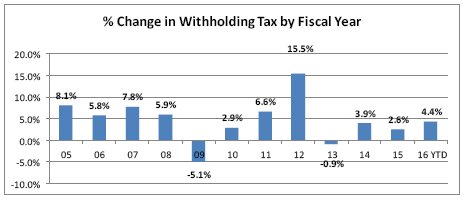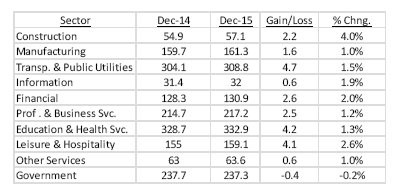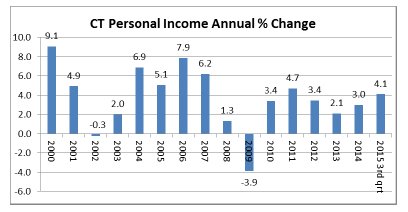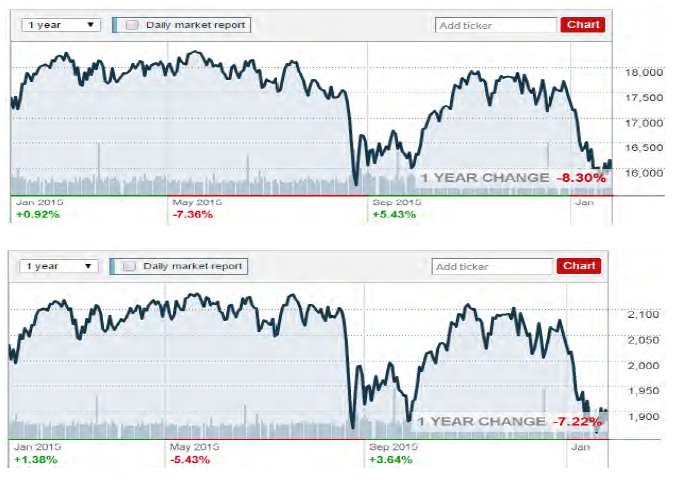Comptroller Kevin Lembo Archive > News
COMPTROLLER LEMBO PROJECTS $7.1-MILLION DEFICIT WITH POSSIBILITY OF FURTHER REVENUE EROSIONComptroller Kevin Lembo today projected a $7.1-million deficit for the current fiscal year, agreeing that the state can achieve its targeted savings on spending, but warning that there is potential for continued erosion of revenue due to stock market declines and a slowdown in the global economy.
Both the Office of Policy and Management (OPM) and the legislature’s non-partisan Office of Fiscal Analysis (OFA) on Jan. 15 reached a consensus on revenue projections. However, the offices reported conflicting projections as to the administration’s ability to achieve savings on the expenditures side of the budget.
In a letter to Gov. Dannel P. Malloy, Lembo said he agrees with OPM’s position that it can achieve $346.7 million in General Fund savings because, as Lembo has noted in many previous reports, OPM has historically been successful in achieving budgeted savings targets.
"The disparity between OPM’s and OFA’s projections rest entirely on spending,” Lembo said. "With respect to budget risk factors for Fiscal Year 2016, my greatest concern is the potential for continued erosion in the General Fund revenue forecast.
"While the state has experienced a consistent pattern of job growth since the close of Fiscal Year 2014 and wages have accelerated slightly in recent months, stock market declines have had a large negative impact on estimated income tax collections. Some factors leading to the market decline and other secondary downward pressures on state revenue include a slowdown in the global economy, a strengthening dollar that has increased the price of exports, falling commodity prices and Federal Reserve policies to gradually raise interest rates.”
Lembo said General Fund revenue to date for the current fiscal year is projected to fall $108.5 million short of initial budget projections – the largest reduction related to the income tax. The income tax is estimated to fall $264.4 million under budget, while the sales tax is projected to be $109.2 million over original budget projections.
"Despite the revenue reductions this month, Connecticut’s economy continues to experience moderate growth,” Lembo said, pointing to some of the latest economic indicators from federal and state Departments of Labor and other sources that show:

• Through the third week in January, year-to-date income tax withholding
receipts were running 4.4 percent above the same period last fiscal year.
Through November, year-to-date withholding was up 2.3 percent. New tax rate
tables incorporating the higher rate structure as adopted in PA 15-244 were
required to be implemented by the end of August. Therefore, beginning in
September 2015 receipts have incorporated the higher tax rates.
• Withholding receipts are the largest single source of state tax revenue,
accounting for 61 percent of the total income tax receipts in Fiscal Year 2015
and almost 40 percent of total General Fund tax receipts in that year. With the
exception of tax increase spikes in Fiscal Years 2011 and 2012, the current
cycle of economic recovery has posted below normal withholding gains. However,
December and January withholding receipts have improved significantly and are
moving toward a growth rate that is more consistent with the state’s employment
numbers. While the stronger growth in withholding is not yet firmly established,
and trend reversals have been experienced in the past, it is a positive
development.

• According to the Department of Labor, preliminary December nonfarm
employment estimates from the U.S. Bureau of Labor Statistics (BLS) payroll
survey (seasonally adjusted) indicated that Connecticut gained 300 jobs in
December, bringing payroll employment to a level of 1,700,700. November’s
original estimate of 5,100 job gains improved to a gain of 5,800 jobs.
Connecticut has now increased nonfarm employment by 22,600 (1.35 percent) in
calendar year 2015, averaging 1,883 jobs per month during the year.
• Connecticut has now recovered 106,700 positions, or 89.7 percent of the
119,000 seasonally adjusted total nonfarm jobs that were lost in the state
during the March 2008 - February 2010 employment recession (pre-benchmark). The
state needs to reach the 1,713,000 job level to enter a clear nonfarm employment
expansionary phase. This will require an additional 12,300 nonfarm jobs.
Connecticut’s nonfarm jobs recovery is now 70 months old and is averaging about
1,524 jobs per month since February 2010.
• The table below looks at peak employment by job sector before the recession
and the December 2015 job totals for each sector. The sectors with the strongest
job additions, Education and Health Services and Leisure and Hospitality, pay
wages that are below the statewide average; whereas, sectors with losses, such
as Manufacturing and Financial Services, have pay rates well above the statewide
average.

• As the state’s employment recovery has progressed, an increasing number of job sectors have posted sustained employment gains. As this trend continues, improved wage growth and withholding receipts should occur.

• U.S. employment has been advancing at a rate of 1.9 percent over the
12-month period ending in December; Connecticut’s employment growth was 1.3
percent for the same period.
• Connecticut’s unemployment rate was 5.2 percent in December; the national
unemployment rate was 5 percent. Connecticut’s unemployment rate has continued
to decline from a high of 9.5 percent in October 2010.
• There were 99,000 unemployed job seekers in Connecticut in December. A low of
36,500 unemployed workers was recorded in October of 2000. The number of
unemployed workers hit a recessionary high of 177,200 in December of 2010.
![]()
• The Department of Labor reports that average hourly earnings at $29.64, not
seasonally adjusted, were up $1.17, or 4.1 percent, from the December 2014
hourly earnings estimate. The resultant average private-sector weekly pay was
calculated at $995.90, up $36.46, or 3.8 percent higher than a year ago.
• The 12-month percent change in the Consumer Price Index for All Urban
Consumers (CPI-U, U.S. City Average, not seasonally adjusted) in December 2015
was 0.7 percent.
• The graph below shows the monthly percent change from the prior year in
Connecticut private sector weekly earnings. Since the start of Fiscal Year 2015,
Connecticut has experienced positive growth in wages, although still below the
pre-recession growth levels.

• Based on third-quarter data from the Bureau of Economic Analysis released on Dec. 21, Connecticut ranks 27th nationally in income growth for the quarter. The chart below shows the 12-month trend in Connecticut personal income, which has yet to attain its past expansionary strength.

• Per capita income does not provide information on income distribution or
relative income inequality. A report issued by the Economic Policy Institute in
2015 stated that New York and Connecticut had the largest gaps between the
average incomes of the top 1 percent and the average incomes of the bottom 99
percent. In both states, the top 1 percent earned average incomes more than 48
times those of the bottom 99 percent.
• In 2015, Connecticut ranked number two in the nation in the number of
households per capita with investable assets of over $1 million. According to
Phoenix Global Wealth Monitor, 100,996 or 7.3 percent of households in the state
were millionaires. The state also held this ranking in 2014.
• Based on Connecticut’s progressive income tax structure, the top 2 percent of
wage earners in the state pay almost 40 percent of the total income tax.

• According to a Jan. 12 release by the Warren Group, November single family
home sales in the state increased 16.4 percent from the prior year’s November.
But continuing a trend that has been seen in 23 out of the past 25 months in
Connecticut, home prices fell 8.4 percent in November from a median of $250,000
to $229,000.
• Sales volume in the state’s housing market had been solid throughout 2015. The
year-to-date sales gain through November was 14.4 percent. The Warren Group
notes that due to price deflation, Connecticut remains a buyer’s market.
• On a year-to-date basis, New Haven, Litchfield and New London counties have
posted the strongest sales gains.
Consumers
• According to a Jan. 29 report from the Commerce Department, household
purchases rose at a 2.2 percent annualized pace in the fourth quarter, compared
with a 3 percent rate in the previous period. Unseasonably mild weather cut into
spending on utilities. The full year pace of consumer spending for 2015 was 3.1
percent, which was the fastest pace in a decade.
• The Federal Reserve cited steady household spending growth as a factor in its
decision to raise interest rates this month for the first time in a decade.
• The personal saving rate edged down to 5.5 percent of after-tax income in
November compared to 5.6 percent in October. The personal savings rate has been
on a general downward trajectory over the past 50 years.

Business and Economic Growth
• According to the Jan. 29 advance estimate by the Bureau of Economic
Analysis, GDP increased at an annual rate of 0.7 percent in the fourth quarter
of 2015. This follows growth of 2 percent in the third quarter.
• The deceleration in real GDP in the fourth quarter primarily reflected a
decline in personal consumption expenditures, and downturns in nonresidential
fixed investment, exports, and in state and local government spending that were
partly offset by a smaller decrease in private inventory investment, a
deceleration in imports, and an acceleration in federal government spending.
• Fourth-quarter earnings reports from S&P 500 companies are expected to decline
by 5 percent, potentially marking the first back-to-back decline since 2009,
according to S&P Capital IQ.
• The drop in oil prices and the rise of the U.S. dollar are expected to
continue to negatively impact corporate profits. It comes at a time when global
growth is also in decline.
Stock Market
• Estimated and final income tax payments account for approximately 40
percent of total state income tax receipts. These payments show a correlation to
activity in equity markets relating to capital gains.
• Through the first three weeks in January, year-to-date estimated and final
income tax payments for Fiscal Year 2016 were slightly negative as compared to
last fiscal year. This trend resulted in a $75 million reduction in the income
tax projection in the January consensus revenue forecast. To date, the income
tax estimate has been revised down by $264.4 million from initial budget
projections.
• According to a recent report released by the Federal Reserve, Americans lost
nearly $1.2 trillion in wealth in the third quarter as the stock market dropped.
This equity decline contributed to one of the largest losses in household net
worth since the economic recovery began. To put the loss in perspective, in the
third quarter total real GDP was $16.4 trillion.
• Corporate equities lost $2.3 trillion over the quarter. Major stock indexes in
the U.S. plunged sharply in late August of 2015. Market volatility has continued
to erode gains that occurred after the August correction.
• The graphs below show movement in the DOW and the S&P respectively.

***END***
